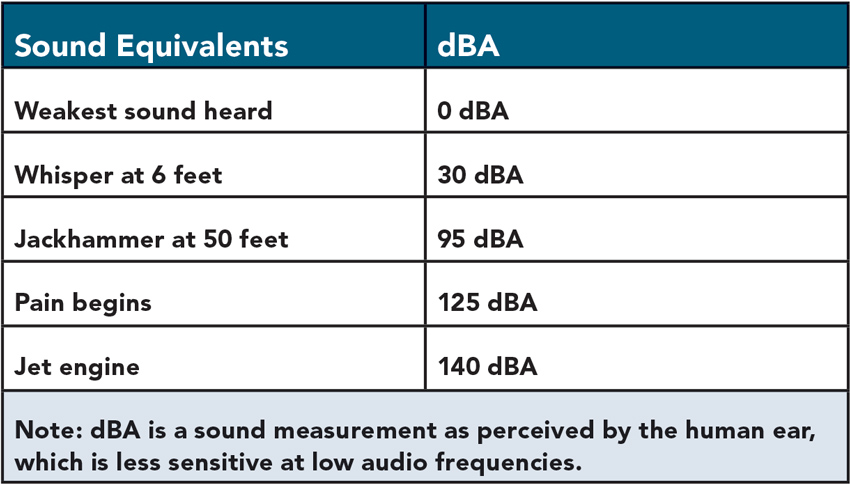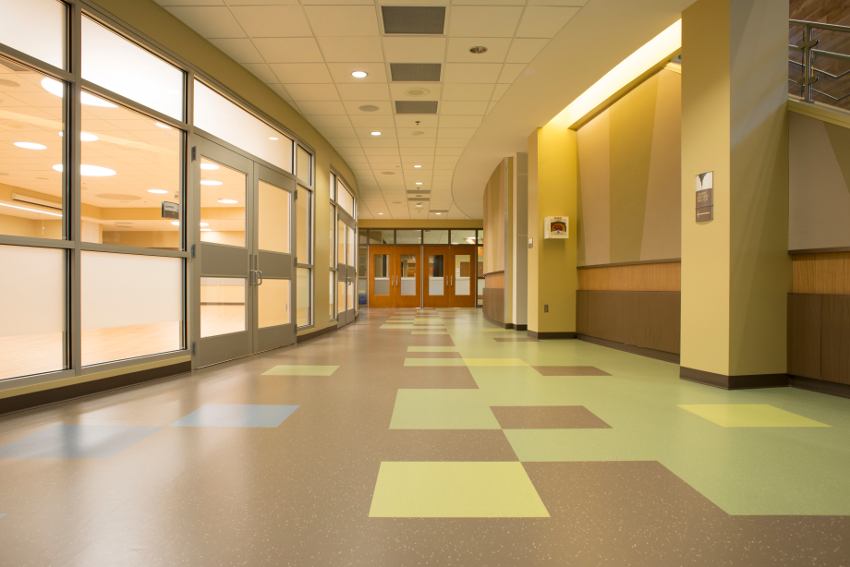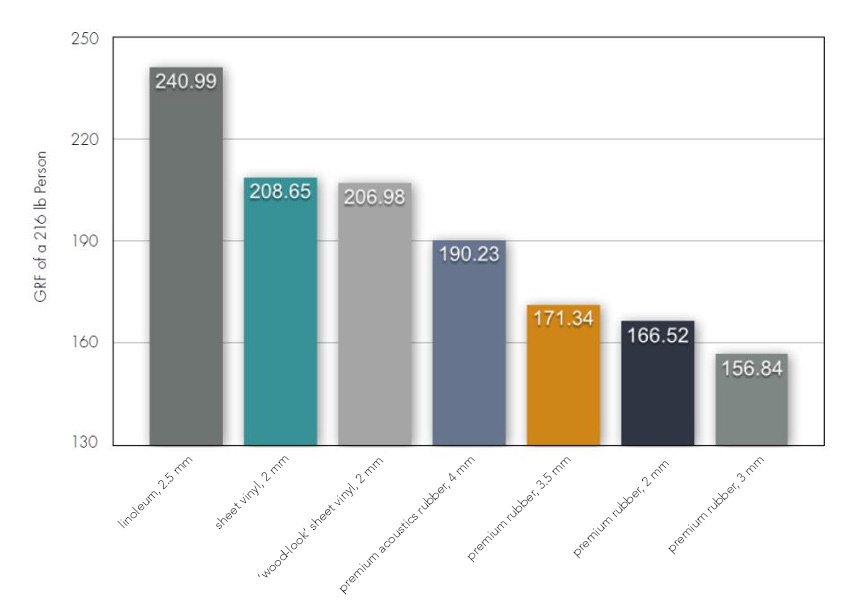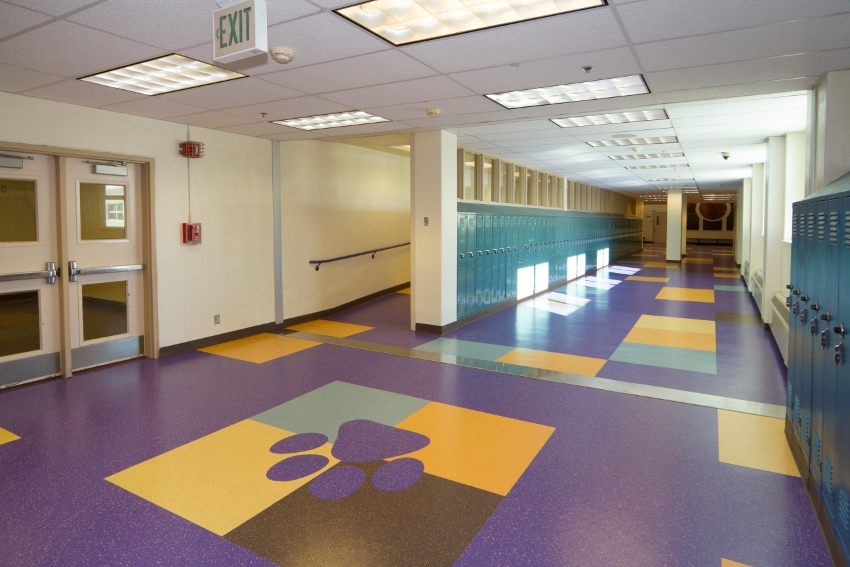Student Health. Student Performance. Student Success.
CAN YOU HEAR ME?
Another basic but often unmet requirement in the learning environment is the ability of everyone to hear and be heard clearly: teachers, other students, and in most classrooms today, audio from a range of devices. Classrooms have become multimedia communication environments, further increasing the importance of classroom acoustics. Yet noise levels in classrooms are often so high that they significantly interfere with teaching and learning. The Acoustical Society of America (ASA) estimates that many classrooms feature a speech intelligibility rating of 75 percent or; it recommends a 95 percent speech recognition level.12 That means listeners with normal hearing can understand only 75 percent of the words read from a list. Students with hearing difficulties or without fluency in English will have even more severe problems. Studies show that up to 60 percent of classroom activities involve speech.13 Not surprisingly, a growing body of research links acoustics to student learning and achievement.14
Good acoustics for learning enable easy verbal communication, which requires low noise levels and very little reverberation. Flooring, along with other materials in the classroom, can have a positive impact on communication and the ability to hear and learn. It may not be realistic to create a concert hall in every classroom, but new findings about the nature of unwanted noise and how to deal with it are suggesting practical solutions.
The ASA recommends background noise exposure levels of 35dB for unoccupied core- learning spaces and maximum reverberation time of 0.6- 0.7 seconds = hard to understand.15
Acoustic performance is derived from a combination of sound absorption, reverberation, and transmission of impact sound. Materials selection, particularly of ceilings, walls, and flooring, plays an important role in reducing the unwanted noise that interferes with an effective learning environment. Most common building materials transfer noise throughout a space, but premium rubber flooring reduces the amount of sound being generated, which helps to control unwanted ambient noise and in-room impact noise reduction.
The term for a range of common sounds caused by normal activity in a space is “footfall sound.” Footfall sound, which can result in unwanted noise and clatter, is transferred into classrooms through slabs, walls, and other structures; for example, from students talking or walking through adjoining corridors or hallways. The use of thicker rubber flooring (for example, 3–4 millimeters) and premium products designed for acoustic performance can dampen this excess noise. A common misconception is that carpets offer the only solutions to noisy environments. A recent third-party test comparing measurements of 10 different floor coverings, including four premium rubber products and common carpets, showed nearly identical acoustic ratings.
Evaluating Acoustic Testing
Testing and measuring a material’s acoustic performance is complex, so it is helpful to look at what different test results mean for a flooring’s actual performance in the built environment.
- ASTM E2179 Standard Test Method for Laboratory Measurement of the Effectiveness of Floor Coverings in Reducing Impact Sound Transmission through Concrete Floors is the test that specifiers should reference and the one used by resilient floor manufacturers marketing their products’ acoustic performance.
- Results of this test include both impact insulation classification (IIC) and delta IIC (∆IIC). (See below for further explanation of these values.)
- ASTM E2179 results are relevant if noise is a concern from either the room above or below. The entire ceiling and subfloor assembly on its own will typically reduce the sound transmission above or below the room. Ask for the ∆IIC Test Report to make a meaningful comparison.
- ASTM E492 Standard Test Method for Laboratory Measurement of Sound Transmission Through Subfloor-Ceiling Assemblies Using the Tapping Machine does not allow for ∆IIC. It is important that the specifier and client partner are informed as to the differences between IIC and ∆IIC.
Understanding IIC and ∆IIC
- Results of ASTM E2179 include IIC and ΔIIC values (Delta Impact Insulation Classification).
- It is important to test with and without flooring installed to calculate out ceiling and subfloor.
- The resulting value for flooring only is stated as a Δ (Delta) IIC value.
- The ASTM E2179 baseline reference for concrete floors is an IIC of 28 (deduct for Δ).
How to Compare IIC & ∆IIC Results
ΔIIC value of 14 or IIC value of 34-28 (per ASTM concrete deduct) = 6 ∆IIC. Now with both in equal results, you have a ΔIIC of 14 and ∆IIC of 6. The higher value represents less sound transfer.

Background noise levels in unoccupied classrooms should not exceed 35 dBA.
Comfort for Concentration
Discomfort is a distraction. There is already stress enough in today’s intense learning environments; it is completely unnecessary to add the stress of hard floors, noisy interiors, and uncomfortable glare. In addition to providing a quieter atmosphere for learning, as discussed above, flooring can contribute to comfort and greater concentration in two other major ways: ergonomic and visual.
Comfort Underfoot: Musculoskeletal disorders account for one-third of all occupational injuries and illnesses reported by employers, constituting the largest job-related injury and illness problem in the United States. Indirect costs, such as lost productivity, retraining, and sick or administrative time, can be at least four to 10 times more than the direct costs. Teachers in particular spend most of their work day on their feet. Discomfort from fatigue, headaches, back pain, foot pain (not to mention from students) is common, but teachers, like most people, tend to take it for granted that the floor is going to be hard and standing for long periods is going to be uncomfortable, so they underestimate the difference that properly designed resilient flooring can make—until they stand and work on it for the first time.
As noted by Bob Cervi, director of facilities, maintenance, and operations for the Eanes School District in Austin, Texas, the premium rubber flooring installed in their schools has had a positive effect on reducing fatigue for teachers.

Eanes Independent School District (ISD) recently completed three projects, including the gymnasium at Valley View Elementary, corridors at Hill Country Middle School, and the cafeteria at Eanes Elementary. The district wanted a long-range, standardized flooring solution to use in all its classrooms, hallways, cafeterias, and gyms to eliminate problems experienced with its old flooring. A premium rubber flooring product was selected to replace existing VCT and carpet tile.
The comfort of rubber flooring was also a factor in its selection by Kentucky’s Scott County School District, says Mike Luscher, director of facilities. “We visited another school here in Kentucky that used the product in its cafeteria and lobby. I liked the feel under my feet. The floor had noticeable cushion.” The product was recently selected for the new 70,000-square-foot Lemons Mill Elementary School in Georgetown, Kentucky.

Blue Valley
Unlike most hard floor coverings, rubber is a flexible material that absorbs the pressure of footsteps differently. Although “underfoot comfort” is often discussed, it has seldom been objectively measured. Numerous studies going back decades have focused almost entirely on the measurement of subjective fatigue due to prolonged standing on different types of floors and mats. As research technology rapidly evolves, more targeted testing is being developed, such as the use of near-infrared spectroscopy (NIRS) to measure oxygenation levels in the muscle as indicators of the stress of standing or walking on various surfaces.
A test recently developed by the University of Pittsburgh Bioengineering Department and a leading premium rubber manufacturer is designed to measure the direct impact of the forces experienced by the human body through the foot. As part of an extensive graduate study on human fatigue attributed to prolonged standing or walking on different flooring surfaces, this test method measures the reduction of ground reaction force (GRF) of floor-covering materials. When the foot strikes the ground during walking or running, the ground produces an opposite and equal force directed back to the foot. Using state-of-the-art pressure mapping equipment molded into a test shoe that is free of cushioning, this test allows the measurement of the return force imparted on the foot, through the floor covering, without the variable of footwear.
The test compared four premium rubber floor coverings and three other common resilient floor coverings (2.5-millimeter linoleum, 2-millimeter sheet vinyl, and 2-millimeter wood-look sheet vinyl) under identical conditions. Each floor covering was tested for 50 cycles, and the average GRF measured at the foot was calculated for each. Average GRF is calculated over one entire cycle of walking, from the time the heel first hits the floor through to when the foot is lifted from the floor. Flooring surfaces with lower measured GRF are reducing the impact on the body through the foot with each step.
Test results are shown in the graph below.

Note that the relative reduction in ground reaction force will vary depending upon the mass of the person and the walking gait. For example, the force of a 216-pound person's foot impacting the 3-millimeter premium rubber floor only impacts the body as if the person were 156.84 pounds.
Light and Learning: Natural daylighting is a keystone of the most effective and innovative learning environments. While the roles of windows, walls, and ceilings in daylighting design have been studied extensively, the impact of flooring has received less emphasis. That said, however, careful selection of flooring in educational settings does have an important influence on daylighting. For instance, glare caused by glossy coatings can cause annoyance, discomfort, fatigue, eyestrain, and headaches. An uncoated floor, on the other hand, supports visual comfort and safety, as there is little to no glare from the floor surface.
Additionally, premium rubber flooring options can help support the objective in the learning environment of increasing available light while preventing glare.
These considerations have also made their way into the LEED rating system, and the light reflective value (LRV) of surfaces is now referenced in LEED v4 for educational facilities.

Lathrop High School









